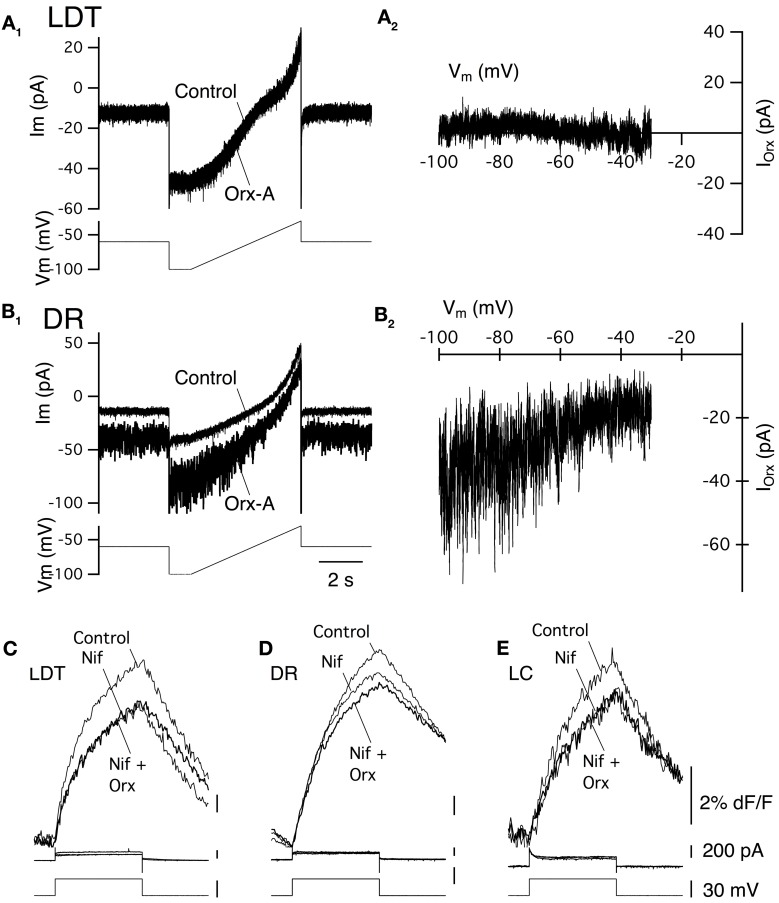Figure 7.
Stimulation of OX2 alone activate a noisy cation current in DR neurons and enhance Ca2+ transients mediated by L-type Ca2+ channels in LDT, DR, and LC neurons. (A1) Whole-cell voltage clamp currents (upper traces) from an LDT neuron in an OX−/−1 slice recorded before and after bath superfusion with orexin-A (Orx-A, 300 nM). These currents were produced by the voltage-ramp in the bottom trace (−100 to −35mV). Orexin failed to produce an inward shift in holding current in LDT neurons from OX−/−1 mice. (A2) The difference between the currents in (A1) plotted as a function of membrane voltage (Vm) shows the I-V relation. No orexin current was detectable throughout the voltage range studied. (B1) Orexin-A (300 nM) produced an inward shift in holding current and a large increase in membrane current noise in DR neurons recorded in OX−/−1 slices. (B2) The I-V relation for the difference current from (B1) appeared nearly linear and was characteristic of the cation current observed in DR neurons from C57BL6 slices. (C,D,E) The L-channel antagonist, nifedipine (Nif, 10 µM) attenuated the Ca2+-transients evoked by voltage-steps from −60 to −30 mV in LDT (C), DR (D), and LC (E) neurons from OX−/−1 slices and prevented the enhancement of these transients by orexin-A (300 nM). Top traces show somatic Ca2+-dependent fluorescence (dF/F); Middle traces show whole-cell current; Bottom traces show membrane voltage. Calibration bar labels in (E), also apply to (C,D).

